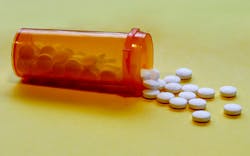Adults with opioid use disorder who receive a higher daily dose of the opioid addiction treatment medication buprenorphine may have a lower risk of subsequent emergency department visits or use of inpatient services related to behavioral health (such as for mental health and substance use disorders) than adults receiving the recommended dose, according to an analysis funded by the National Institutes of Health (NIH).
These findings suggest that higher buprenorphine doses could be more effective in managing opioid use disorder, which may be particularly relevant for improving treatment for those who use fentanyl, a major driver of the overdose crisis.
Researchers reviewed insurance claims data from over 35,000 people who were diagnosed with opioid use disorder and began buprenorphine treatment between 2016 and 2021. They found that among all people who started treatment with buprenorphine, 12.5% experienced an emergency department or inpatient visit related to behavioral health within the study period. After adjusting for patient demographics and medical history available in the data, researchers then analyzed how long it took for people receiving different doses of buprenorphine to use emergency care or have an inpatient stay after starting treatment.
The recommended target dose for buprenorphine in the U.S. Food and Drug Administration (FDA)’s approved labeling is 16 mg per day. Researchers found that those taking higher daily doses of buprenorphine (>16 to 24 mg) took 20% longer to have a subsequent emergency department or inpatient healthcare visit related to behavioral health within the first year after receiving treatment, compared to those receiving >8 to 16 mg a day. Those taking daily doses of more than 24 mg of buprenorphine went 50% longer before having a subsequent emergency or inpatient healthcare visit related to behavioral health within the first year after receiving treatment, compared to those receiving >8 to 16 mg a day.
The authors also note that addressing barriers to accessing higher doses, such as state laws and insurance policies, will be important in ensuring that all patients receive effective care. In addition, revisiting guidelines that serve as barriers to higher doses could be beneficial, as these may limit access to potentially life-saving treatment for patients at high risk of relapse or overdose.
Notably, the data used in the study were pulled from a single commercial insurance company, which does not include uninsured people and those with Medicaid or fee-for-service Medicare coverage, and the sample of people included in the analysis was 75% non-Hispanic white.

